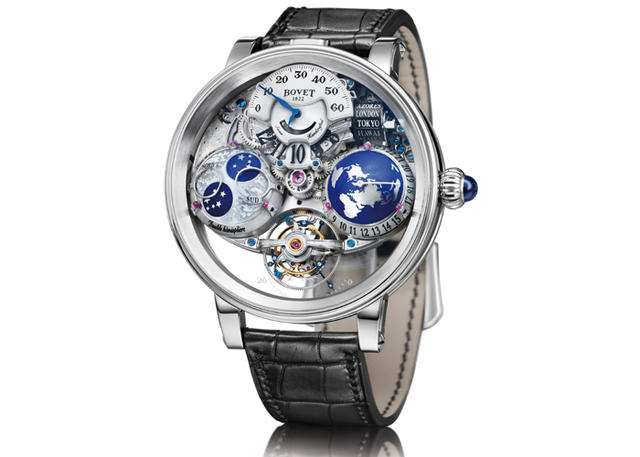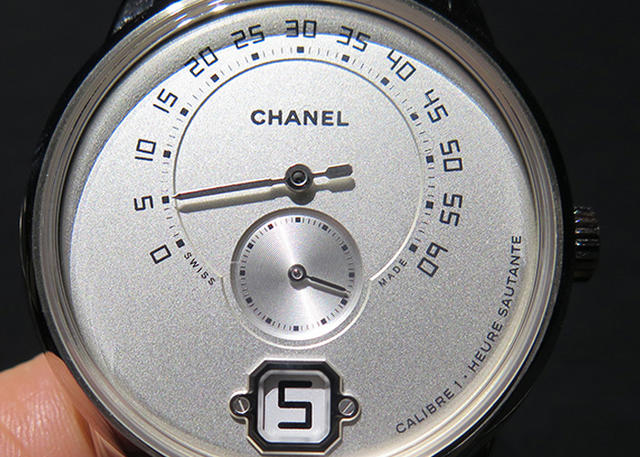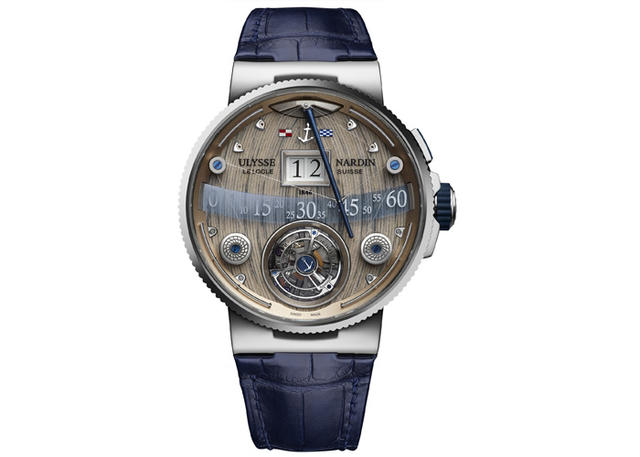The jump hour, or jumping hour as it is sometimes called, is one of the heritage complications that, along with the minute repeater and the tourbillon, were developed in the 18th and 19th centuries for pocket watches replica. The jump hour is so named because the numerals representing the hours are printed on a rotating disk that turns or “jumps” once every hour. Hours are displayed in an aperture, usually at 12 o’clock, like a digital readout. Minutes are usually read by a traditional central hand or displayed on a retrograde/flyback index on the upper or lower half of the dial.
This arrangement of functions appeals to lovers of classic minimalism because it eliminates the need for a traditional hour track on the dial’s periphery and at most uses one hand. The jump hour module, however, is a complex assembly – it has to jump precisely on the hour, and it has to jump smoothly, with no extra bounce or wobble. It also has to align perfectly within the aperture.
All of this takes place quickly and demands almost as much power as a chronograph, putting a lot of stress on the movement. It often incorporates some kind of constant force system.
The first recorded jump hour watch was made by French watchmaker Blondeau in the 1820s, but it was Austrian engineer Joseph Pallweber, who patented and mass-produced the mechanism. He sold movements to the Swiss firms IWC and Cortébert, a maker of primarily railway watches replica in the early 19th century. Vacheron Constantin was also making jump hour watches replica as early as 1820.
Few brands make these charming and esoteric complications, but they are enjoying a bit of a resurgence this year.
Here are six jump hour watches replica introduced in 2016.
Meistersinger Salthora Meta

Purists are drawn to MeisterSinger’s unique, one-handed watches replica, which typically use a single, needle-thin hour hand that indicates time to within the nearest five minutes. For those who like the single-hand aesthetic but want a more traditional reckoning of both hours and minutes, the new Salthora jumping hour is perfect. It uses a single minutes pointer on the central dial, and indicates jump hours separately in a window at 12 o’clock. MeisterSinger uses a module on either an ETA 2824-2 or Sellita SW 200-1 base, both with a 38-hour power reserve. It is 43mm wide, in a stainless steel case with an exhibition back. Dial options include white, ivory, blue or black. $3,675.
Bulgari Diva’s Dream

The collection that pays tribute to the iconic movie stars of the Dolce Vita era now has a jump hour model. The hour aperture is positioned at six o’clock and the minutes retrograde index on the upper two-thirds of the dial, with bezel-set diamonds serving as index markers. Aside from this, the only thing visible is the mineral dial itself, which is made of heart of ruby or lapis lazuli. The bezel and strap attachments on this gold watch are set with 79 diamonds totaling over two carats. Inside is automatic Caliber BVL 262. $34,600
Bovet Recital 18 Shooting Star

There is a lot more going on with this watch than a typical, minimalist jump hour. In addition to an hour aperture and retrograde minutes it has a tourbillon escapement and a universal world timer – which is also a kind of jump mechanism, since it jumps from city to city with a push of the crown. It also has a moonphase indicator for both Northern and Southern hemispheres. The open worked dial makes this one of the most modern, least classic jump hours on the market. The hand wound Caliber 17DM01-HU is encased in 18k white gold. It is limited to 50 pieces. $315,000.
Hysek Kalysta Jump Hour

The 39mm Kalysta Jump Hour is Hysek’s first gem-set watch. The dial is used as a canvas for an etched floral motif topped by an applied diamond-set butterfly. A marquise-cut pink sapphire travels around the rose gold bezel to indicate minutes, with no index to interrupt the design. A moonstone cabochon tops the crown, with an open-ring winder set with a single diamond. The movement, automatic Caliber HW61, was designed and produced in-house. $61,410.
La Montre Monsieur Chanel

The shape of the jump hour window mirrors the shape of Place Vendôme in Paris, where Coco Chanel lived (at the Ritz Hotel), and where Chanel has a boutique. The retrograde index is larger than normal, arcing on a 240-degree scale instead of the standard 180-degrees, forming almost an entire circle – not an easy feat, mechanically, and something that takes a lot of power. The case’s 18-karat gold is alloyed to create Chanel’s proprietary beige gold color, a lighter form of rose gold. It contains Chanel’s first in-house movement, the manual wound Caliber 1, developed with Romain Gauthier, of which Chanel owns a share. $34,500.
Ulysse Nardin Grand Deck Marine Tourbillon

This imaginative dial recreates the deck of a classic racing yacht, with inlaid wood resembling a real deck and a blued aluminum minute hand representing the boom. It sweeps down from the 12 o’clock position across a retrograde minutes scale, pulled by strong high-tech fibers that wrap around “rigging screws” and pinions that function like winches on the deck of a racing yacht. The jump hour is displayed in a double window just above the minutes. The manual-wound Caliber UN-630 has a flying tourbillon escapement, and was designed in collaboration with Christophe Claret. It is a limited edition of 18 pieces in white gold. $280,000.